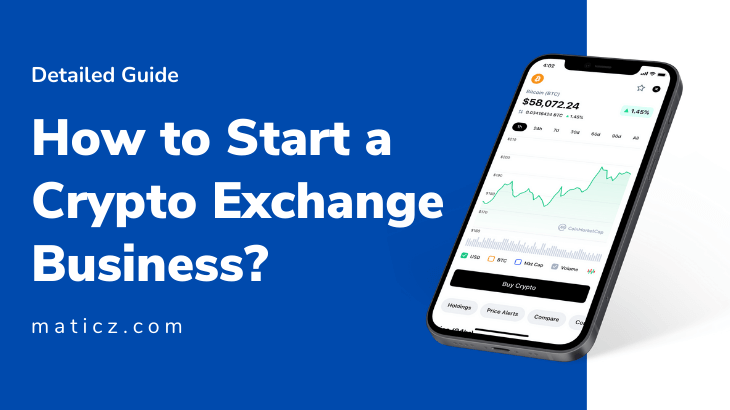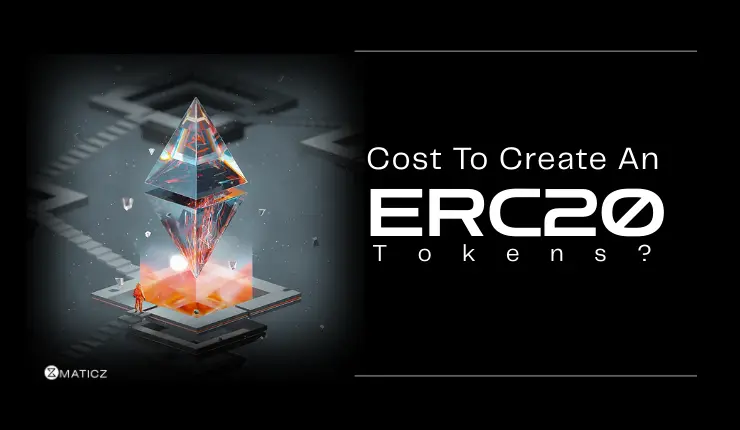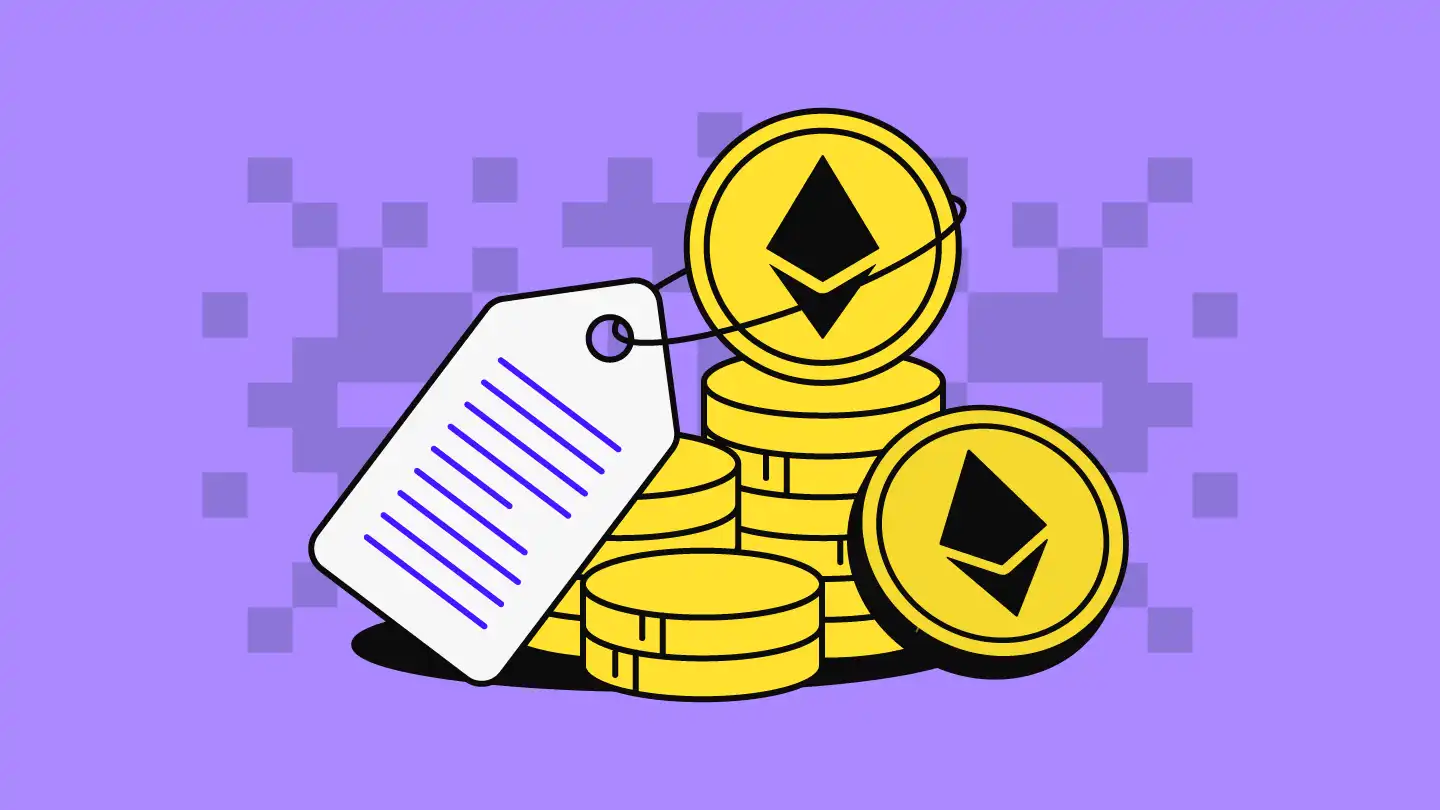Share Posts

How to Create a Cryptocurrency Exchange Website?
50
6054
103
Nowadays, cryptocurrency is known by people as a global phenomenon. Cryptocurrency is a virtual/digital currency that works on blockchain technology and is stored on its cryptocurrency network, consisting of thousands of nodes. Traditionally, intermediaries such as banks, brokers, and agents typically charge varying fees when conducting transactions electronically. Cryptocurrency transactions are one-to-one. So intermediaries are excluded from the equation. It makes the transaction smoother and more accountable for interactions between both parties. Cryptocurrency is a decentralized system and does not require third-party approval to make transactions successful. So cryptocurrency transactions are incredibly fast. It is utterly secure and reduces transaction fees.
Cryptocurrency Exchange Platform
Cryptocurrency exchanges are websites where people can buy/sell or exchange cryptocurrencies or digital currencies for other assets such as fiat currencies or digital currencies. It acts as a medium between buyers and sellers. The trading platforms also levy a fee on traders withdrawing the funds from their accounts. Transaction fees and commission fees are the prime sources of income for the platform owners. The transactions allowed credit cards and debit cards to buy cryptocurrencies.
Crypto Exchanges like Binance, Coinbase, LocalBitcoins, Poloniex, Wazirx, etc.. are the leading players in the crypto market. The growth of these exchanges is phenomenal and so you keep hearing about business giants and global investors getting into the crypto exchange business but have no idea how they're starting a crypto exchange business. Don't worry, We've got you covered with this detailed guide.
How to Start a Crypto Exchange Business?
Here are the 10 steps process to start a crypto exchange platform
1. Explore the global crypto market.
2. Review the legal formalities of the country.
3. Identify the type of exchange you want to launch.
4. Prepare a document for your business requirement.
5. Approach a crypto exchange development company.
6. Finalize development cost & build your crypto exchange.
7. Integrating core features and functionalities.
8. Launch Beta Version or Deployment in client-server.
9. Have an effective technical support team.
10. Market your platform to your targeted audience.
Now let’s explore these 10-step processes in detail,
Step:1 Explore the Crypto Market
Any project should be supported by rigorous market research. So, do thorough research to identify cryptocurrency market trends. Using this, we could recognize the list of cryptocurrencies that should be added to the platform and find out more features searched by traders on the crypto exchange platform. It helps to gain more users and increases the trading volume as well as revenue.
Step:2 Review the legal formalities of the country where you're going to launch your platform
After getting a clear idea about the crypto market, choose the country where you are going to launch your crypto exchange platform. It is essential to study the government policies and legal formalities of the government to start an exchange. Some governments are welcoming cryptocurrency, while others are hostile. If you fail to comply with the rules, it will lead to problems. So you must have complete knowledge of the rules and regulations of the country.
Step:3 Identify the type of exchange you want to launch
Based on nature, it is broadly classified into three categories.
1. Centralized Exchange
In these centralized exchanges intermediaries such as companies act as a middle man to facilitate trading on their platforms. Alternatively, intermediaries charge a trade fee to provide this service. Mainly centralized exchanges are often the first choice for newcomers and also the operation of the centralized exchange is relatively simple. Many users want to have an interface that connects them to both cryptocurrency trading and the real economy, centralized exchanges provide this.
2. Decentralized Exchange
Unlike centralized exchanges, centralized counterparties do not require Intermediaries for their operation. It eases peer-to-peer trading by relying on automated smart contracts to allow trading without intermediaries.
3. Hybrid Exchange
This hybrid exchange is an intermixture of centralized and decentralized crypto exchange platforms. It vanquishes the disadvantage of DEX and is designed to be faster.
Step:4 Prepare a document that includes the business requirement of the platform
Prepare the document with sought-after features. It must meet the user's expectations and satisfy security protocols. For this, we need to fully analyze the crypto market. Based on this, we could identify what kind of features attract users.
Step:5 Approach the trustworthy crypto exchange development company and identify the development cost
For this, you need to hire a good crypto exchange development company. Usually, the price of software varies from one company to another. Withal, the cost of the crypto exchange platform depends on the technology on which the platform is going to be built, features that will be integrated into the platform, and the type of exchange. Hence find out your needs to get a quote for the crypto exchange platform and make sure that you have enough financial background to afford it.
Step:6 Tie up with the outstanding company & Implement the platform with high-security features
The success of the project mainly relies on the development team, so try to associate with a trustworthy company. After getting tied up with that company, sign an NDA to protect the confidential information between the two parties.
Step:7 Integrating the most sought-after features
When designing a digital exchange platform, do not forget to include these vital features in the platform. This includes quick transactions without any interruption, quick registration viewing transaction history, and monitoring.
Desired Features of a Crypto Exchange Platform
1. Attractive front end
2. Robust trading engine
3. Automated KYC/AML verification
4. Secured core wallet
5. Payment gateway
6. Launchpad
7. Referral program
8. Trading bot
9. Multi-language support
10. Multi-cryptocurrencies support
11. Liquidity
12. Leverage trading
Step:8 Launch Beta Version & Deployment
Through beta testing, we get to know how the platform works smoothly and displays errors. It will improve the quality of the final product. It helps to verify the functionality, adaptability, usability, and compatibility of the site. After this beta version, the source code of the software will be deployed on the client's production server.
Step:9 Have an effective support team
There should be an effective support team on a platform to assist clients when needed. Once the platform is deployed on the server, customers start using the platform.
Enhancement - adding new features to the existing platform
Upgrade - Getting the latest version of the software
Bug Fixing - This occurs due to some features not being included in the testing part.
These three activities have occurred once the product is on the live site.
Step:10 Introduce your platform to your targeted people
The platform succeeds when it meets targeted people. For this, you need to promote your crypto exchange platform to the right audience. Then only you get more users on your site. So use some innovative marketing strategies to attract people to your site.
These are some mandatory processes that you must do in starting a crypto exchange.
How to Build a Crypto Exchange Website with Maticz?
Maticz the leading Cryptocurrency Exchange Development Company offers best-in-class crypto exchange development services for investors/entrepreneurs who are actively looking to start a crypto exchange business. We offer white-label crypto exchange software as well as develop crypto exchange platforms from scratch.
Our Crypto Exchange developers are the industry-leading players in developing hassle-free exchange platforms. We are pioneers in developing various crypto exchanges like a centralized exchange, decentralized exchange, p2p exchange, hybrid exchange, defi exchange, etc. We follow certain mandatory processes in building crypto exchange platforms.
Create your own Crypto Exchange Platform in two significant ways
1. White Label Crypto Exchange Software
The cost of creating a crypto exchange platform depends on the features that users want to develop. The development cost and time required for the white-label crypto exchange is minimal compared to setting up a new exchange from scratch. It is beneficial for individuals with less capital investment. The white-label crypto exchange is a ready-made solution. So, minimal changes are only allowed.
Know more: White Label Crypto Exchange
2. Build a Crypto Exchange Platform from Scratch
Developing cryptocurrency exchange from scratch comes with a lot of advantages compared to white-label crypto exchanges. It is a customized solution so we can create features based on customers' preferences. Creating a site from scratch is difficult compared to white-label solutions in terms of time and money. It provides sites with scalability and safety.
List of Features You Must Have in Your Crypto Exchange
1. Robust Trading Engine
To increase user engagement, make sure that you can carry out high-level transactions every minute in a faster way. So the trading engine must be running in a fast manner. and reduces the latency. Usually, a buy order is placed as per the trader's wish at a specific price. This buy order is placed in the orders book and matches with other traders’ sell orders. Once the trade engine matches the order, the exchange of funds takes place.
2. KYC/AML Verification
KYC and AML stand for Know Your Customer and Anti Money Laundering. It is used to prevent illegal activities and used to prevent identity theft. These activities are done by financial institutions and regulated businesses to verify the identity of their customers and get their information from them.
3. Wallet Integration
A crypto wallet is a software that stores the private keys and public keys of the traders. It allows users to send and receive digital coins and track their balance. There are many types of cryptocurrencies. Each one of them is supported by different types of wallets. These wallets can be divided into 3 types such as software wallet, hardware wallet, and paper wallet. Depending on the working mechanisms it is classified as a hot wallet and a cold wallet.
Hot Wallet: Any wallet that is connected somehow to the internet is called a hot wallet. It is more convenient for traders and frequent users. Because they can be easily set up and funds can be easily accessible in a hot wallet. This wallet can be categorized into Desktop wallets, Mobile wallets, and Hybrid wallets.
Cold Wallet: These wallets are very safe compared to hot wallets. Because it is not connected to the internet. Instead of that, it is used as a physical medium to store the keys in an offline mode and it is very resistant to hackers. This is especially suitable for long-term investors. It is more secure compared to other crypto wallets. This wallet can be categorized into Hardware wallets and paper wallets.
4. Payment Gateway
A payment gateway is a software application that accepts payments online from anywhere via different channels and devices. The payment gateway lies between the merchant website and the payment processing bank and this is the most essential part for online payment and online transactions. Payment gateway comes with multiple payment options, rapid payment processing, and provides secure transactions. This is the fastest way to receive card payments. This process is much quicker compared to manual processing.
5. Multi-language support
This is one of the most predominant features. Most of the crypto exchange platforms fail to satisfy the customer due to ineffective multilingual support. This feature breaks the language barrier and helps to extend the exchange platform globally. When people get to interact with their native language they feel very comfortable and it enhances the customer experience.
6. Multi-cryptocurrency support
It supports many cryptocurrencies such as Bitcoin, and Ethereum. Now, more cryptocurrencies are available in the market. So traders search for an exchange that supports the send, receive, store, and transfer of cryptocurrencies.
7. Liquidity
It refers to how quickly traders can get money out of an asset. We can quickly convert an asset into cash when we have stronger liquidity. Liquidity is extremely important when considering the trading position. It ensures how efficiently we get in and get out of the market.
8. Interactive real-time trading view
This will give a clear idea about the past and present pricing details for the crypto traders & help to predict the price of crypto in the future. Also, it helps to analyze the portfolio, with this users can plan their trades.
9. Launchpad
Most popular crypto exchange platforms are introducing launchpads. Upcoming items and tokens can be launched here.
10. Security consideration of the crypto exchange platform
A platform must have security features such as 2FA(2 Factor Authentication), cold wallet storage, multi-signature wallet & SSL certificate.
How Maticz Set Up a Cryptocurrency Exchange?
1. Scope Finalizing
This stage gives a crystal clear picture of the scope of the project as well as a clearly defined road map. It provides an overview of the project and the objective of the project with time estimation.
2. Team Allocation
After finalizing the scope of the project, allocate the team that would be working on the project to develop a crypto exchange the platform consists of front-end developers, back-end developers, UI designers, QA teams, and the Project Manager.
3. Development Phase
Developers start the development process, they build it with a Programming language. It is one of the longest phases in the Crypto exchange platform. It consists of the following stages
- UI design
- Front-end development
- Backend development
- Listing the digital currencies
4. Testing Phase (Auditing and Bug Fixing)
This is the most crucial role of developing a platform. Testing plays a major role in today's business world so we need to conduct extremely elaborate testing. After crossing the development phase, the software is deployed into the testing environment. Every module will be included to verify the entire platform's functioning following the flow of the client's requirements. Bugs and glitches were found while testers ran test cases and it was forwarded to the development team. The development team fixes the error and sends it back for testing. This process continues until the software is error-free and stable.
5. Deployment Phase
Once the testing phase is over, no bugs & errors are left in the system. Now it's ready to deploy to the customer's end.
Final Thoughts
We have delivered everything from Cryptocurrencies and crypto exchanges to creating Crypto exchanges. Hope our guide to developing a crypto exchange helps founders of Crypto businesses. If you need help in building a crypto project then feel free to contact Maticz Team.
Tap Into the Future
The latest insights, posts, and project updates - straight to your inbox.




